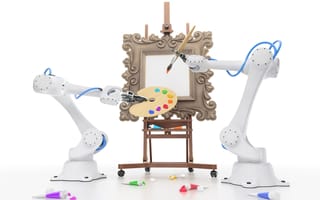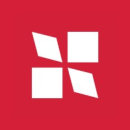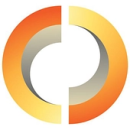Fire and water are elements that represent opposing principles. Hot and cold, one dousing or consuming the other. The opposing natural building blocks have long been portrayed in popular culture and mythology as diametrically disparate philosophies.
In reality, however, they’re two sides of the same crucial coin. In cooking, the delicate dance of flame and liquid extracts the essence key to flavors. On volcanic grounds, hot lava pulses into pacifying waters to generate the foundations for new land mass.
This yin-yang relationship found throughout nature can also be observed in the seemingly dichotomic relationship between engineers and designers at tech companies. The common adage in the industry describes a relationship at odds: function versus form, aesthetic versus technical code. But for most products and company operations, these different teams must collaborate without friction to develop viable, customer-ready products.
“ComplYant is heavily reliant on near real-time communication between designers and engineers at all points of the software development life cycle,” said Benjamin Matthews, the company’s engineering manager.
Proper transparency and communication channels — built from tools and intentional scheduling — are good ways to ensure that both teams have balanced discourse, and can support what the other is working on. To prevent discord from occurring, going one step further and integrating the both sets of roles under an umbrella team can further strengthen professional unity. For team members at Core Digital Media, compromise between engineers and designers is key. “Being adaptable is always relevant as it pertains to the design and engineering dynamic,” said Sean Flynn, senior director marketing.
At SprintRay, the essential duality of both roles is ensconced by the company culture itself, where designers and engineers understand from the start that their work cannot exist without the other. To maintain this buy-in, the teams use tools and rituals to maintain engagement and continuous communication, including detailed documentation and scrum ceremonies.
For a look at how tech companies successfully navigate the interdependent functions of engineers and designers, Built In LA sat down with ComplYant, Core Digital Media and SprintRay to see how they harnessed fire and water to make magic happen.

SprintRay is a dental technology company that provides user experience for digital dentistry, from product to support and education. Some of its innovative products include dental 3D printers, hybrid ceramic resin and software for digital dentistry support.
Such a technical hardware and software niche requires designers and engineers that work together to marry form and function. “Both teams need constant input and a general awareness of what the other team is working on,” said Software Engineer Arun Apartha.
What kind of communication channels or collaborative strategies does your company use to facilitate communication between your design and engineering teams? In your opinion, what makes them successful?
“Good design and UX is a core requirement for our software,” Arun Apartha, a software engineer who works on products across SprintRay’s offering, said.
Good communication is key to continuously improving the user experience. The biggest challenge when dealing with any separate business function is communication. At SprintRay, designers and engineers understand that their work is inseparable. “Features will not be developed if they don’t have a design and will fail testing if the design isn’t up to spec,” Apartha said. “The entire culture encourages everyone to consult the design team and develop an eye for what looks right.”
The biggest challenge when dealing with any separate business function is communication.”
How does your company culture foster the kind of collaborative relationship required to make the two teams successful?
UX Designer Ellie Brackett agrees that communication is critical. She highlights some of the tools and rituals that the teams jointly adhere to that helps them stay in sync. “There are scrum ceremonies that facilitate conversations amongst cross-functional team members, and we use Jira tickets to document design and engineering activity. Confluence acts as the final source of truth for product information, which helps us all stay synced.”
Members of the design team attend software scrum standups and are on hand to explain aspects of any design that might not be immediately apparent to the engineers. This also gives them the opportunity to understand what may or may not be feasible from a technical standpoint. But these rituals are only as strong as the buy-in from individual team members, and Apartha says that SprintRay creates a culture of individual responsibility and ownership. “We empower the developers to openly question features if they feel something would lead to a bad user experience.”
Ultimately, Apartha and Brackett both agree that it’s best to build relationships across team lines from the very beginning. “It’s important to involve engineers early and often.”
What advice would you offer to other companies looking to build alignment between the two teams?
For other companies working to improve the harmony between design and engineering, Apartha suggests that “having a continuous feedback and conversation mechanism ensures our products are always being improved. This produces an overall better and smoother product, leading to better user experience.”
Brackett highlights the importance of detailed documentation. “We document the functionality and expected behaviors along with any other important information before we hand it off to engineering. At this point, informal conversations usually mean they already know. But we don’t like to leave anything ambiguous,” she said. “That’s how we make sure our users have an elevated experience with both a good design and pitch-perfect functionality.”

Core Digital Media is a financial media company that offers consumer advice so people can make better financial decisions. With subsidiary publications like LowerMyBills, Classesusa and ItsHome, the company’s portfolio aims to empower regular people as they navigate complex financial obstacles.
A product meant to help users is only as good as its form and function, which makes the integration of Core’s design and engineering teams all the more important. “The most important aspect of communication between design and engineering is making sure engineers understand and buy-in to the business and UX value of the design decisions we make,” said Sean Flynn, senior director marketing.
What kind of communication channels or collaborative strategies does your company use to facilitate communication between your design and engineering teams? In your opinion, what makes them successful?
One of the ways we facilitate this is by getting people together as early in the process as possible, explaining the product and UX goals, and how the work we are currently doing fits into the product roadmap. It’s also helpful to explain the specific success metrics we’ll use to evaluate the feature or change, and then keep the teams aware of how these progress.
On a more tactical level, we have UX designers attached to the agile teams, attending daily stand-ups, grooming, refinement and sprint planning meetings, as well as doing UAT to ensure UX objectives are met. Along with Slack, this allows for continuous communication, questions to be answered quickly and issues to be resolved collaboratively.
How does your company culture foster the kind of collaborative relationship required to make the two teams successful?
Team members are encouraged to ask themselves if something could benefit from others’ input as often as possible, whatever stage a project is at in the dev cycle.
Transparency covers the communication of goals, metrics, roadmaps and also personal responsibility. It involves making sure your teammates understand things like your strengths, weaknesses, current bandwidth, amount of experience with a particular issue, how much effort something takes and why you decided to do something a specific way.
Both disciplines are in a constant bargaining process, trying to deliver the most value as fast as possible. Designers might have to give up a feature, engineers may have to incur some technical debt and both need to be able to adapt quickly and intelligently to meet the business goal.
These are basic concepts, but having them as key competencies — used in performance evaluation, spoken about at all-hands meetings and written across the walls of the office — shapes the way teams interact, and benefits the design and engineering relationship.
Both disciplines are in a constant bargaining process, trying to deliver the most value as fast as possible.”
What advice would you offer to other companies looking to build alignment between the two teams?
Common ownership of product, UX and company goals. Make the team, which includes product, UX and engineering, be collectively responsible for achieving objectives.
I also encourage education between disciplines. Have designers explain our process, why we do the things we do, why a particular platform was chosen, the implications of technical debt and more. The more we understand each other, the better we work together
ComplYant is a B2B company that helps small businesses with tax obligations to avoid penalties from late filings or payments. The company’s platform takes care of the whole process, from deadline tracking to budgeting and more. Its appeal lies in using a simple, all-in-one solution for a complex issue.
With software that needs to be effective and easy-to-use, ComplYant has fostered a workplace where engineering and design teams collaborate well. “Teams should be working together toward company goals rather than being siloed, and cross-functional alignment is the best way to ensure that,” said Engineering Manager Benjamin Matthews.
What kind of communication channels or collaborative strategies does your company use to facilitate communication between your design and engineering teams? In your opinion, what makes them successful?
ComplYant is heavily reliant on near real-time communication between designers and engineers at all points of the software development life cycle. Using common tools such as Slack and Figma, our designers are able to gather feedback on their designs from engineers, and engineers are able to work directly with designers to reach a solution that gives good user experience while not presenting pain points for engineers.
Support and transparency are two of ComplYant’s core values. By fostering an environment with this in mind, we have built a place where everyone feels free to respectively share their opinions. Designers and engineers excel at what they do, and by working in an environment that provides support and transparency at its core, each member is able to provide meaningful feedback and collectively work towards a common goal.
How does your company culture foster the kind of collaborative relationship required to make the two teams successful?
We’ve put processes in place to make sure that our design team is constantly in stride with our engineering team. Rather than treating the two teams as distinct entities, the design and engineering teams are treated as one singular unit — the product team. This arrangement has given us the benefit of having designers and engineers feel as if they are working towards a common goal, rather than being against each other as is often joked about in these fields. ComplYant’s designers and engineers are often in the same meetings, share the same team-building exercises and attend the same company conferences. By fostering this relationship from day one with new hires, we are able to set clear expectations of how we want them to interact with each other.
We’ve put processes in place to make sure that our design team is constantly in stride with our engineering team.”
What advice would you offer to other companies looking to build alignment between the two teams?
The best advice that I could give would be to not isolate the two teams. Teams should be working together toward company goals rather than being siloed, and cross-functional alignment is the best way to ensure that. Designers and engineers should be working closely together; placing both teams in the same scrum team, for example, is a great way to begin building alignment.
Additionally, creating an environment where these teams are aligned in both internal and external events creates personal bonds between teammates that can ultimately produce better work and help to foster a healthy work environment.










